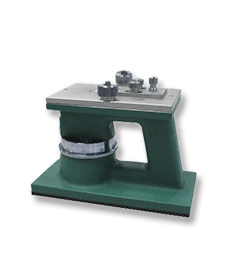Commonly encountered faults in maintaining fiber microtomes
When maintaining fiber microtomes, several common faults and issues may arise. Here are some examples:
1. Blade Dullness: The most common maintenance issue is a dull or blunt blade. Over time, the microtome blade can become less effective in cutting fibers, leading to poor section quality and artifacts. Regular blade sharpening or replacement is necessary to maintain optimal cutting performance.
2. Blade Misalignment: If the microtome blade is not properly aligned, it can lead to uneven or skewed sections. Misalignment may occur due to improper handling or accidental movement of the blade holder. Regular inspection and alignment adjustment are essential to ensure accurate and consistent cutting.

3. Specimen Holder Problems: The specimen holder, which holds the fiber sample during sectioning, can experience faults such as misalignment, improper tightening, or insufficient grip. These issues can result in poor sample stability and uneven sections. Regular inspection and maintenance of the specimen holder are necessary to ensure proper functioning.
4. Motor Issues: Microtomes rely on motors for blade movement and sectioning. Motor problems can include irregular speed, excessive vibration, or even complete failure. These issues may result from motor wear, electrical faults, or improper maintenance. Regular motor inspection, lubrication, and timely repairs are essential for uninterrupted operation.
5. Contamination: Fiber microtomes are prone to contamination from debris, oils, or previous samples. Contaminants can negatively affect section quality and accuracy. Regular cleaning and proper sample handling techniques are necessary to prevent contamination and maintain high-quality sections.
6. Lubrication Problems: Microtomes require lubrication to ensure smooth and precise blade movement. Insufficient or incorrect lubrication can lead to increased friction, affecting cutting performance and potentially damaging the microtome components. Regular lubrication, following manufacturer guidelines, is crucial for the proper functioning of the microtome.
7. Cutting Chamber Cleaning: The cutting chamber can accumulate debris, dust, or residual fibers over time, which can affect section quality and contaminate subsequent samples. Regular cleaning of the cutting chamber, including removing debris and wiping surfaces, is essential for maintaining optimal working conditions.
8. Wear and Tear: With prolonged use, various parts of the microtome, such as the blade holder, sample stage, or feed mechanism, may experience wear and tear. This can lead to decreased precision, instability, or functionality issues. Regular inspection, part replacement, and general maintenance are necessary to address wear and tear and ensure proper microtome performance.
9. Lack of Calibration: Microtomes require periodic calibration to ensure accurate cutting and section thickness control. Failing to calibrate the microtome on a regular basis can result in inconsistent sections and inaccurate measurements. Following the manufacturer's calibration guidelines is crucial for achieving reliable and reproducible results.
10. User Error: Many faults in maintaining fiber microtomes can be attributed to user error. Insufficient training, improper handling, or inadequate adherence to maintenance protocols can lead to various issues. Continuous training, user awareness, and following proper operating procedures are essential to prevent user-induced faults.
Regular maintenance, inspection, and adherence to manufacturer guidelines are key to preventing these common faults in fiber microtome maintenance. Implementing a comprehensive maintenance schedule and seeking professional assistance when needed can help ensure that the microtome performs optimally and delivers high-quality sections consistently.

